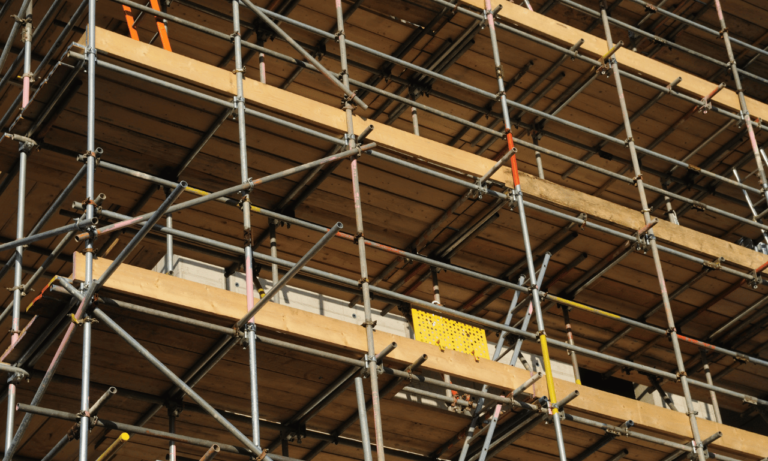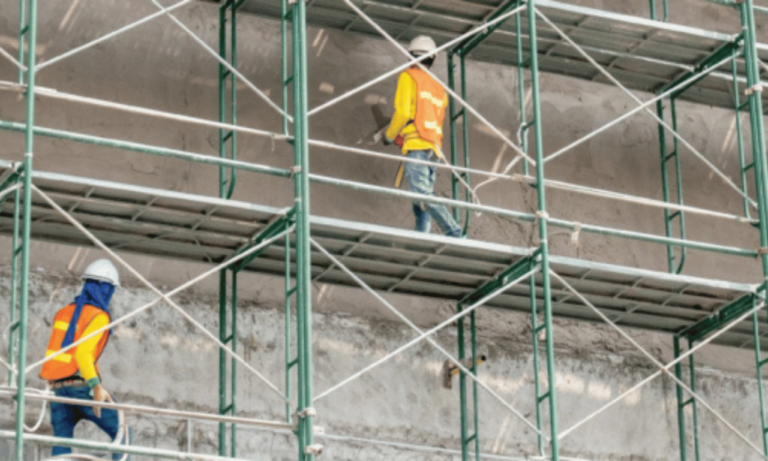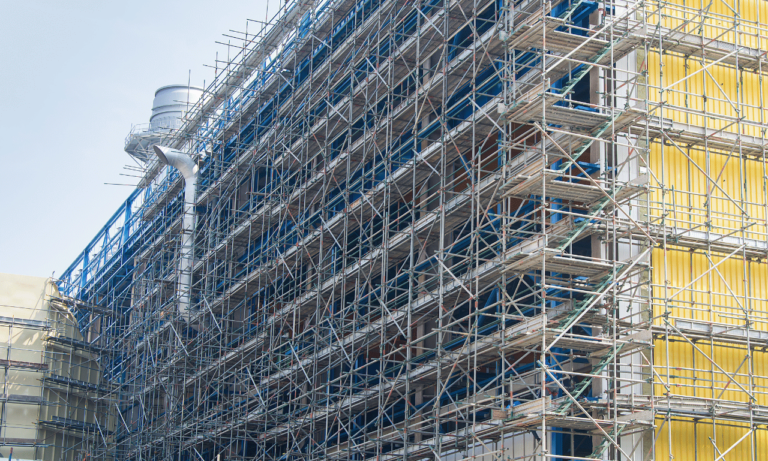Phone:
(+65)8319-0742
Conservation scaffolding is a critical aspect of sustainable construction and green building practices. It plays a crucial role in creating eco-friendly scaffolding solutions that promote environmental conservation and sustainable infrastructure. By focusing on material efficiency, durability, reduced energy consumption, transportation efficiency, and safety measures, conservation scaffolding offers a range of benefits that align with green building standards and contribute to a more sustainable future.
Key Takeaways:
- Conservation scaffolding is essential for sustainable construction and green building practices.
- It promotes environmental conservation and creates eco-friendly scaffolding solutions.
- Material efficiency, durability, reduced energy consumption, transportation efficiency, and safety measures are key features of conservation scaffolding.
- Conservation scaffolding aligns with green building standards and contributes to a more sustainable future.
- By integrating conservation scaffolding into construction projects, professionals can support environmental stewardship and contribute to sustainable infrastructure.
Environmental Benefits of Conservation Scaffolding
Ringlock scaffolds, a type of conservation scaffolding, offer several environmental benefits. Their modular design allows for precise customization, **reducing waste** and **minimizing the environmental footprint** associated with traditional scaffolding methods.
One of the key environmental advantages of ringlock scaffolds is their **material efficiency**. The modular components can be easily assembled and disassembled, maximizing the use of construction materials and **minimizing waste generation**. This reduction in waste contributes to **sustainable and eco-friendly construction practices**.
The **durability and reusability** of ringlock scaffolds also play a significant role in their environmental benefits. Unlike traditional scaffolding, ringlock scaffolds are designed to last for multiple projects, resulting in **fewer replacements** and a **decreased demand for construction materials**. This not only reduces the overall environmental impact but also contributes to **cost savings** for construction companies.
Another environmental advantage of ringlock scaffolds is their contribution to **reduced energy consumption** and **transportation efficiency**. The modular design allows for easy transportation, optimizing space and **decreasing fuel consumption** during transportation. This leads to lower **carbon emissions** and a **reduced environmental impact** overall.
Ringlock scaffolds are also built with **safety measures** in mind, ensuring minimal accidents and incidents during construction. The focus on safety not only protects the workers but also contributes to **environmental conservation** by preventing site contamination or hazardous materials from being released into the environment.
In addition to these benefits, ringlock scaffolds also promote **water conservation**. Their efficient design reduces the need for excessive water usage during construction processes, aligning with water conservation efforts and **sustainable water management** practices.
Furthermore, the adaptability of ringlock scaffolds to **renewable energy installations** enhances their environmental benefits. These scaffolds can be easily integrated into renewable energy projects such as solar panel installations or wind turbine maintenance, supporting the growth of **clean and sustainable energy**.
Overall, ringlock scaffolds provide several environmental benefits, including **material efficiency**, **durability and reusability**, **reduced energy consumption**, **transportation efficiency**, **safety measures**, **minimal environmental impact**, **water conservation**, and **adaptability to renewable energy installations**. These eco-friendly features make ringlock scaffolds a valuable tool in promoting sustainable construction practices and contributing to a greener future.
Uses and Applications of Conservation Scaffolding
Conservation scaffolding, such as frame scaffolding, is widely used across various industries and construction projects. It provides a secure and accessible platform for workers in building construction, maintenance and repairs, bridges and infrastructure projects, industrial facilities, shipbuilding and maritime construction, power plant maintenance, historical restoration and conservation, communication tower construction, wind turbine maintenance, high-rise window cleaning, oil and gas industry platforms, stadium and arena construction, airport infrastructure projects, and railway bridge maintenance.
The versatility and adaptability of conservation scaffolding make it suitable for a wide range of applications, ensuring worker safety and project success.
| Industry/Project | tttUses and Applications | tt
|---|---|
| Building Construction | tttProvides a stable platform for construction workers to perform various tasks at different heights. | tt
| Maintenance and Repairs | tttEnables access to hard-to-reach areas for maintenance and repair work. | tt
| Bridges and Infrastructure Projects | tttFacilitates construction and maintenance of bridges and other infrastructure projects. | tt
| Industrial Facilities | tttAids in maintenance and construction activities within industrial facilities. | tt
| Shipbuilding and Maritime Construction | tttOffers a safe working platform for shipbuilding and maritime construction tasks. | tt
| Power Plant Maintenance | tttAllows workers to conduct maintenance activities in power plants. | tt
| Historical Restoration and Conservation | tttAssists in preserving and restoring historical buildings and structures. | tt
| Communication Tower Construction | tttProvides access for workers during the construction and maintenance of communication towers. | tt
| Wind Turbine Maintenance | tttEnables safe access to wind turbines for maintenance and repair purposes. | tt
| High-Rise Window Cleaning | tttAids in the cleaning and maintenance of windows in tall buildings. | tt
| Oil and Gas Industry Platforms | tttSupports various tasks on oil and gas industry platforms, including maintenance and construction. | tt
| Stadium and Arena Construction | tttAssists in the construction of stadiums and arenas, providing a safe working environment for workers. | tt
| Airport Infrastructure Projects | tttEnables construction and maintenance activities in airport infrastructure projects. | tt
| Railway Bridge Maintenance | tttFacilitates maintenance and repair work on railway bridges. | tt
As shown in the table above, conservation scaffolding is vital for a wide range of industries and projects. Its adaptability makes it an indispensable tool for various applications, ensuring workers can safely operate at elevated heights and access hard-to-reach areas. Whether it’s constructing new buildings, conducting maintenance and repairs, or preserving historical structures, conservation scaffolding plays a crucial role, providing stability, accessibility, and safety for workers.
Types of Conservation Scaffolding

Conservation scaffolding encompasses various types that cater to specific needs and requirements in construction projects. Understanding the different types of scaffolding is crucial for professionals to choose the most suitable option for their projects. The following are some common types of conservation scaffolding:
1. Walk-through Frames
Walk-through frames are designed with built-in ladders, providing convenient access to the scaffold platform. This type of scaffolding allows workers to move freely between levels, enhancing efficiency and safety on the job site.
2. H-Frame Scaffolding
H-frame scaffolding, also known as H-frames, is characterized by its ‘H’ shape, which offers excellent stability and support. This type of scaffolding is widely used in construction projects requiring strength and durability.
3. Mason Frame Scaffolding
Mason frame scaffolding is specifically designed for masonry work, providing a larger platform area to accommodate materials and workers. This type of scaffolding is commonly used in projects that involve bricklaying, stonework, and other masonry-related tasks.
4. Snap-on Frame Scaffolding
Snap-on frame scaffolding is known for its user-friendly assembly process, utilizing snap locks for quick and easy connection of components. This type of scaffolding offers convenience and efficiency, reducing the time required for setup.
| Type of Scaffolding | Features | Applications |
|---|---|---|
| Walk-through Frames | Built-in ladders Convenient access | Building construction Maintenance and repairs Industrial facilities |
| H-Frame Scaffolding | ‘H’ shape for stability Strong and durable | Bridges and infrastructure projects Power plant maintenance Wind turbine maintenance |
| Mason Frame Scaffolding | Designed for masonry work Larger platform area | Historical restoration and conservation Stadium and arena construction Airport infrastructure projects |
| Snap-on Frame Scaffolding | User-friendly assembly Snap locks for quick connection | Communication tower construction High-rise window cleaning Railway bridge maintenance |
Conclusion
Conservation scaffolding plays a crucial role in sustainable construction and green building practices. By integrating conservation scaffolding into construction projects, professionals can promote eco-friendly building solutions and contribute to environmental conservation. With its focus on material efficiency, durability, reduced energy consumption, transportation efficiency, and safety measures, conservation scaffolding offers a sustainable and environmentally friendly solution for the construction industry.
By aligning with green building standards and supporting the principles of environmental stewardship, conservation scaffolding helps create a greener future. Its versatility and various types make it a valuable tool in the development of sustainable infrastructure. As construction professionals prioritize sustainable practices and eco-friendly scaffolding, they can actively contribute to a more environmentally conscious and sustainable built environment.
With the benefits of conservation scaffolding, such as reduced waste, decreased environmental footprint, improved efficiency, and safety, it’s clear that this construction practice is essential in creating a sustainable future. By adopting green building practices and incorporating conservation scaffolding, we can build structures that not only meet our immediate needs but also safeguard the environment for generations to come.
FAQ
What is conservation scaffolding?
Conservation scaffolding is a type of scaffolding that is designed to promote sustainable construction and green building practices. It focuses on material efficiency, durability, reduced energy consumption, transportation efficiency, and safety measures to minimize the environmental impact associated with construction projects.
What are the environmental benefits of conservation scaffolding?
Conservation scaffolding, such as ringlock scaffolds, offers several environmental benefits. They promote material efficiency, durability, and reusability, reducing the demand for construction materials. They also minimize energy consumption and transportation emissions due to their modular design and optimized transportation efficiency. Conservation scaffolding also prioritizes safety and minimizes the impact on the environment during installation and removal.
Where is conservation scaffolding used?
Conservation scaffolding is widely used across various industries and construction projects. It is commonly used in building construction, maintenance and repairs, bridges and infrastructure projects, industrial facilities, shipbuilding and maritime construction, power plant maintenance, historical restoration and conservation, communication tower construction, wind turbine maintenance, high-rise window cleaning, oil and gas industry platforms, stadium and arena construction, airport infrastructure projects, and railway bridge maintenance.
What are the different types of conservation scaffolding?
There are several types of conservation scaffolding available. Walk-through frames feature built-in ladders for convenient access to the scaffold platform. H-frame scaffolding provides excellent stability with its ‘H’ shape design. Mason frame scaffolding is specifically designed for masonry work and offers a larger platform area. Snap-on frame scaffolding is known for its user-friendly assembly, utilizing snap locks for quick and easy connection of components.
How does conservation scaffolding align with sustainable construction practices?
Conservation scaffolding plays a crucial role in sustainable construction and green building practices. By focusing on material efficiency, durability, reduced energy consumption, transportation efficiency, and safety measures, conservation scaffolding aligns with green building standards and promotes environmental stewardship. It offers a sustainable and environmentally friendly solution for the construction industry, contributing to the development of sustainable infrastructure and a greener future.
Source Links
- https://issuu.com/constructionmanager6/docs/scaffolding_guide_2023_combined
- https://medium.com/@industrialproducts73/green-construction-the-environmental-benefits-of-ringlock-scaffolds-2387b36ab73f?responsesOpen=true&sortBy=REVERSE_CHRON
- https://industrialproducts82.wixsite.com/proframescaffold/post/a-comprehensive-guide-to-frame-scaffolding-benefits-types-and-applications

















